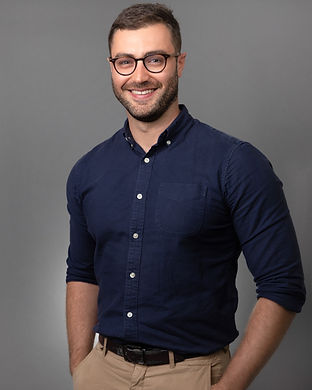ABOUT

Toby Barker M.Ost (Distinction)
PgCertACE
Toby graduated with distinction from the British School of Osteopathy, UK, and was awarded the prizes for overall academic performance in his 2nd, 3rd and final years. He gained experience treating patients from all walks of life across large practices in Suffolk and Cambridge in the UK. He returned as part of the teaching faculty at the BSO and completed a Postgraduate Certificate in Academic and Clinical Education, as well as being a visiting lecturer on the Master of Advance Physiotherapy program at the University of Hertfordshire, UK.
After 5 years in practice and lecturing, je decided to move to Australia for a taste of life down under, where he has been working in the Illawarra region for the last 3 years He has experience and enjoys seeing a breadth of patients, from athletes, office workers, expectant mothers, the elderly and everyone in between, although has a particular interest in chronic and persistent pain.
He currently splits his clinical work between general Osteopathic pracitce, at Wollongong Osteopathy, and a more acute, post-surgical and chronic pain focus, as part of the Allied Health team at Joint Vision Orthopeadic group.

Toby continues to compliment his clinical work with engaging in research and teaching; recently publishing in the International Journal of Osteopathic Medicine and completing the Osteopathy Australia Research Mentoring Program, co-founding the Illawarra Osteopathic Group, in order to improve regional CPD opportunities for Osteopaths and sitting on the Osteopathy Australia Editorial and Educational Advisory and Communications and Marketing Groups, guiding the professional development of osteopaths all over Australia. He continues to present and lecture regularly on areas of interest.
Where possible, Toby strives to increase provision of osteopathy to those who would not normally have access; previously working with homeless shelters, Syrian refugees and volunteering in orphanages and communities in Indonesia, treating children and adults with disabilities who can't access adequate care, alongside a team of fellow Osteopaths and Physiotherapists.
In his spare time enjoys the gym, swimming, hiking, rock climbing and is persisting, albeit it with limited success, at surfing!

Osteopathy
Osteopathy is a system of diagnosis and treatment predominantly targeted at the musculoskeletal system (muscles, joints, ligaments etc…). Osteopaths take a broad, holistic, view of patients; appreciating that many factors beyond the area of pain, such as your lifestyle, occupation and life stresses can affect your body and therefore symptoms. Treatment and management will include both hands-on techniques such as manipulation, stretching and massage, as well as rehabilitative exercise, advice and education on your complaint in order to get you on the road to recovery.
The most common conditions we see and manage as Osteopaths are Low Back Pain, which 80% of us will experience at some point on our lives, and Neck Pain; both of which Osteopathy is recommended for alongside exercise by government guidelines. Although Osteopaths are most commonly known for treating spinal pain, we can also help manage many other complaints such as joint and muscle injuries (shoulder, knee, hip, ankle, elbow for example…), sports injuries, arthritic pain and headaches related to the neck. Please do not hesitate to contact me if you have any specific questions regarding conditions we may help manage.
Osteopaths train for a minimum of 4 years at undergraduate level and alongside studying anatomy, physiology, technique and research methods must complete over 1000 hours of supervised clinical practice. By law, all Osteopaths in Australia must be registered with Australian Health Practitioner Regulation Agency (Ahpra) the UK must be registered with the General Osteopathic Council (GOsC), who regulate the practice of Osteopathy, ensuring that all Osteopaths are appropriately trained, insured and keep up to date with continued professional development.
What to expect...
Your initial consultation will last about an hour; follow up appointments are usually between 30-45 minutes. During your consultation your Osteopath will discuss your symptoms and medical history. All information will remain confidential. They will then examine you – you may be asked to perform some active movements as well as your Osteopath assessing the range of your joints passively by moving them for you. Your Osteopath may also need to perform tests such as taking your blood pressure or your reflexes. After examination your Osteopath will discuss with you what they think is going on and explain how they might be able to help and how quickly they expect you to recover, as well as other options available. In some instances it may be necessary to refer you to your GP or another healthcare practitioner for further investigations. If you are happy to proceed treatment will be offered during your first consultation.
You may be asked to remove some items of clothing in order for your Osteopath to assess and treat you; it is therefore advisable that you bring either comfortable underwear or shorts for your appointment. If you are uncomfortable with removing clothing you will be offered a medical gown or are welcome to remain clothed; however, it is recommended that if this is the case you wear sensible attire, for example jogging bottoms or long shorts instead of jeans if we need to assess your knee. You are welcome to be accompanied by a chaperone should you wish.
Treatment usually consists of your Osteopath moving your joints and muscles using massage and stretching techniques, they may also use manipulation techniques, where you might hear a small ‘click’ from your joints – your Osteopath will always discuss what techniques they intend to use and ensure you are comfortable during the treatment. If appropriate you may be provided with exercise or lifestyle advice. You may feel sore following treatment; however, this rarely lasts for longer than 24-48 hours.



